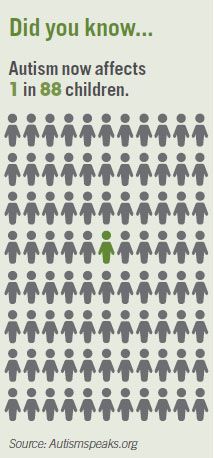What products to avoid and what products work best with autistic patients
As the number of children diagnosed with autism continues to grow, it’s important for you and your team members to know what products to avoid and what products work best when treating patients on the autism spectrum in your practice.
As the number of children diagnosed with autism continues to grow, it’s important for you and your team members to know what products to avoid and what products work best when treating patients on the autism spectrum in your practice.
Autism is a fact of life for many families who come to your dental practice.
What does that mean for your practice and, more importantly, what products can be used safely in patients who are considered toxified or are cured but are still sensitive to product choices and ingredients commonplace to the practice of dental hygiene?
Most importantly, we need to know about autism treatments.
There are two product categories that families avoid if someone in the family is on the autism spectrum: gluten and dairy.
Products like Young Dental’s D-lish prophy paste and other gluten-free polishing pastes are great options for patients with autism.
Dairy-free remineralization ingredients are also great. Products like VOCO’s Remin Pro, which contains hydroxyapatite molecules are well received, as are products containing NovaMin.
Fluoride considerations
Low-level topical fluorides may be well received or at least better received than products with high levels of fluoride.
Triage sealant material is a must-have as it promotes enamel healing, acts as a physical barrier and has none of the issues traditional fluoride varnishes, smart varnishes, and most resin sealant materials have. Those issues include either potentially toxic levels of fluoride, potential ingestion of fluoride, pine resin base, or Bisphenol A, which is found in some resin products.
Glass ionomers have nearly medicinal properties, and may be used as temporary filling material in frank, open, and incipient lesions.
Proximal lesions on adjacent teeth may be repaired using Phocol fluoride disks from Colldent. Highly specific discs are just 3 mm in diameter and can be placed with very little drama at any appointment, preventive or prosthetic.
Because of its extremely pinpoint location, the fluoride given via phocol discs may be better received than a general fluoride treatment. It can be explained as an isolated treatment for a tenuous condition on a single tooth or area.
Non-fluoride options

Fluoride may be a difficult sell to families with children on the autism spectrum, and that means non-fluoride options better be high on your practice’s protocol development list.
Xylitol products are fantastic for this group of patients. They can tolerate the all-natural plant-based xylitol. There is some misinformation on the Internet that may keep some from using xylitol products.
Become educated on all sides of the xylitol story by visiting xylitol.org. Some parents may lean toward stevia, for instance, as a natural sweetening option. While great as an ingredient or additive for hot or cold drinks, there are few studies on stevia and oral health/dental decay.
Erythritol is another story! Truvia is nearly all erythritol. As another sugar alcohol, erythritol has some interesting studies showing dental benefits, although xylitol is still the go-to sugar for dental health.
The benefits of fluorescence technology
Radiation is always going to raise a red flag to those who are trying to remain or regain health. Low radiation is not as good as no radiation.
Fluorescence technology can really set minds at ease and allow clinicians to gather more data than they could from traditional radiographs.
Transillumination is an option, too, however that shows only enamel breakdown, not the quality of biofilm accumulation.
Become more educated
Start to gather intel on Autism Spectrum Disorder and how autism is successfully treated today.
My radio broadcast, The Autism Experience on Cross Link Radio, is a good starting point. Look for products that fit the sensibilities of these families and you may find a wonderful way to treat all families.